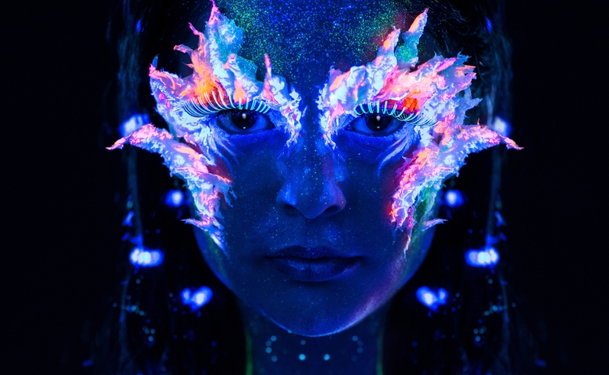What are ultraviolet tattoos?
UV tattoos are also known as black-light tattoos. These tattoos are made with a special ink that becomes visible under a black light, though the tattoo itself is invisible in regular light. In the last decade, these tattoos have become popular among party-goers as they are readily visible at parties where a black light may be used.
How are UV tattoos applied?
UV tattoos are more difficult and require skill to apply. Since UV ink does not light up in normal light and does not easily blend, attention has to be paid during application. Constant use of a black light to visualize the tattoo is required. The procedure is otherwise done in the same way as other tattoos. UV tattoos may take longer than other tattoos because UV ink is usually thinner and more challenging to apply. Also, a black light is needed on hand to ensure proper application.
What is unique about UV tattoos?
The tattoos placed with UV ink are invisible in regular light, but become visible under black light. The black light causes the UV ink to light up in different colors. The bright appearance of the colors is very captivating. The majority of these UV tattoos are placed on the visible parts of the body such as the face, arms and legs. Despite their unique quality, however, there are some reported cases of UV tattoos fading or yellowing after skin has been exposed to sun for prolonged periods.
Do all tattoo artists use UV inks?
The concern for the health of consumers and questions related to UV ink safety lead many tattoo artists to avoid UV ink. Since there is little or no FDA regulation of tattoo inks in general, some tattoo artists make their own tattoo inks, including UV. With more awareness and newer formulations, UV ink tattoos are making a small resurgence after an initial decline associated with health risks. Researching UV ink is a great way to learn more about potential risks.
Are UV tattoos safe?
Even though advertisements may suggest that UV ink is approved by the Food and Drug Administration, it is not approved for human use. UV ink is currently only approved for use in agriculture and fishing industries. There are no reliable safety studies that explore the effects of human UV ink use.
Still, safety concerns about UV tattoos remain. Statistically, there have been more reactions with UV tattoos than with normal tattoos. The chemicals that compose UV ink are not considered 100% safe due to the number of reported skin irritations. Numerous skin rashes, blisters and infections have been reported with UV ink. In addition, there is some concern that these inks may contribute to cancer.
The health risks associated with UV ink have been linked to the presence of phosphorous. This chemical is known to cause severe blistering, pain, burning sensations and even skin rashes. Many reports of skin problems have been reported to federal agencies. Even with the removal of phosphorus, the other agents found in UV ink may cause adverse effects.
Can UV tattoos be removed?
Like traditional tattoos, UV tattoos can be removed. Laser tattoo removal can break up this unique ink and remove the invisible tattoo from the skin. Still, it should be noted that laser procedures have their own success rates and side effects.


